Since I had some time off from work for the Islamic holiday of ‘Id al-Adha I took my family to Bahrain for four days. I was a little apprehensive about driving there because on previous visits I had always taken a bus. Since I had witnessed the chaotic rush of traffic as it squeezes through customs on the causeway from Saudi Arabia, I tried to time our journey to avoid the worst of the traffic. We left home at 7:30 a.m. on Saturday morning and we got to Manama in about an hour, amazed at how well our travel plan had worked out. There had been almost no traffic along the causeway. I had made a reservation at the Holiday Inn Express hotel off Exhibition Road, near the Diplomatic Quarter, where we arrived much earlier than we had anticipated. The hotel turned out to be very family friendly and really great value for money.

Our hotel – the yellow-colored high-rise in the center of the photo – in Manama. The Holiday Inn was conveniently located near the National Museum.
The rooms were very clean and comfortable and the breakfast buffet—included in the price of the rooms—was of a high quality, with a fairly extensive selection of hot and cold breakfast foods. The hotel also had an adjoining multi-story car park, with uniformed security personnel, which gave us peace of mind when leaving our car overnight. It was the first time I had stayed at a hotel where the security guards check under the car and in the trunk before allowing me to drive into the parking lot. Before leaving on our trip, I had flicked through my guide to Bahrain and picked a few places that we thought would be interesting to visit.
The Kingdom of Bahrain has several old forts and we decided to visit at least one of them during our few days in the country. According to my guidebook, Bahrain Fort, just north of Manama, is the oldest fort that can be seen today—it dates from the 1400s—and is one of the best preserved. However, when we tried to find the fort we missed the exit from the Shaikh Khalifa Bin Salman Highway (it was not signposted as far as we could tell) and we kept on driving along the highway until we reached Bahrain University and realized we had gone too far. On the way back to Manama we drove north along Sh. Khalifa Bin Salman Highway again until we saw a signpost for Riffa and decided we’d try to find the fort there instead, which is known as Sh. Salman Bin Ahmed Al Fateh Fort or, more simply, Riffa Fort. From the main highway we turned right onto Al Riffa Avenue. After driving for about another 20 minutes and negotiating a large roundabout (traffic circle) we saw the sign to the fort and turned right onto Sh. Hamood Bin Subah Avenue. This was a narrow road that wound its way through a residential area of old East Riffa and then up the hill to the fort.
The fort was built in 1812 by Sh. Khalifa Bin Salman, who was the son of the founder of the Al-Khalifa ruling dynasty, Shaikh Ahmed bin Mohammed who was known as “The Conqueror” after winning The Battle of Bahrain in 1783, when his army defeated the forces of Shaikh Nasr Al Mathkur, the Persian backed ruler of Bahrain. The fort was subsequently the home of the Al-Khalifa ruling family until the 1970s and was built on the site of a palace built in the early eighteenth century.
The area around the fort looked to be a little rundown but the fort was well preserved and was situated right on top of the hill. At the back of the fort there is a large wooden deck that overlooks the plain that spreads out below the fort. The fort includes a modern cafe that has been fashioned from one of the rooms in the fort—the old wood beams in the ceiling have been preserved—and visitors can choose to sit either in the air-conditioned interior or outside on the deck with the great view. It was hot during our visit so we sat inside and enjoyed our coffee and cold drinks, as well as some delicious chocolate cake.
The fort includes two main courtyards and numerous rooms. The fort lacked interpretive displays, which could have provided information on how the different rooms in the fort were used during its time as both a military defensive building and a family residence, but it was really an ideal place for children to run around and enjoy the atmosphere.
A very modern visitor center had been installed inside the fort in the largest courtyard, and included interesting displays on the royal family and traditional pursuits, such as falconry and horse breeding, as well as Arabian swords. The most interesting information was probably the display about the ruling Al-Khalifa family, with a “family tree” lit up on one glass panel and old photographs of the fort and historical rulers. According to this display, one of the most interesting residents of the fort was Shaikh Humood bin Subah Al-Khalifa (1873-1958) who restored the fort several times and added rooms and other features to enhance its appearance and function.
After the frustration involved in not being able to find Bahrain Fort and finding that the maps in my guidebook were inadequate, and consequently having to rely more on my instinctive navigation skills, we took our time wandering around the fort on the hill to relax and enjoy the view from the fort. The sights included an oilfield, with many bobbing pumping units scattered about the plain, as well as the sprawl of the town of Riffa. There was also a military museum in a new building next to the fort, which would probably have been interesting, but my traveling companions wanted to visit the Manama souq, and so after concluding our visit to the fort, we headed back to the capital.
On the way back to Manama my wife decided she’d like to take a look at some of the traditional pottery that is made in the area, and we stopped at the Delman pottery in the A’ali area. According to one of the craftsmen who worked at the pottery, there are now about five potteries still operating.
The craftsmen at the Delman pottery make a wide variety of products, including vessels of various kinds and ornaments, including large round wall hangings decorated with hand-painted verses from the Qur’an. We bought one of those. Bargaining is a way of life here, and we managed to negotiate a price that was about three dinar lower than the initial asking price. I wasn’t sure whether this was a good price, but in view of how poor the area looked, I wouldn’t have felt right trying to negotiate for a lower price. The pottery was situated next to a couple of large prehistoric burial mounds. The main island of Bahrain is well known for its many burial mounds—there are approximately 85,000 of them on the island—that date back thousands of years and were built by the early inhabitants of the area, known as the Dilmon people. We drove past a vast expanse of these mounds while searching for a pottery. There is a lot of information about the Dilmon civilization in the Bahrain National Museum, which we also visited during this visit to Bahrain.
It had been an interesting day of sightseeing. We had visited one of the most important forts on the main island of Bahrain and we saw some of the ancient burial mounds for which Bahrain is famous, and one of the potteries still in operation. We saw some of the kilns in use at the pottery and watched a craftsman at work on some new pots. When I think of pottery I think of the quaint old potteries in the southwest of England that I visited several times as a child on holiday with my family. The pottery here in Bahrain was a little different to the potteries of my childhood memory; not quite as tidy. But the skill of the potters was probably just as good.
I can recommend a visit to the Bahrain National Museum at the start of any visit to Bahrain if you want to find out about the history of the country and the historical places that can be seen here. The government also has a website at moc.gove.bh that has a lot of useful information about cultural events and places, including a map that can be used to locate some of the important historic sites. The website can be researched to make an itinerary before you arrive in the Kingdom so that you can make the best use of your time.
For me, the visit to Riffa Fort was the highlight of this trip. The effort and expense that had obviously gone into its preservation certainly made it a place that was worth the fairly long drive from Manama, even considering that we visited the place on a whim after being unable to find one of the other forts on the island, which had been our real objective. On the day that we visited, I noticed only four other tourists and so we pretty much has the whole place to ourselves. The view from the hilltop location was impressive, and last, but not least, the toilets were world-class!
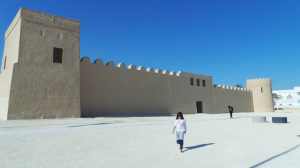
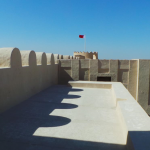
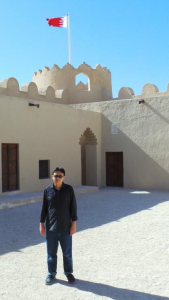


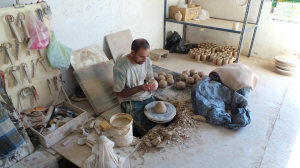
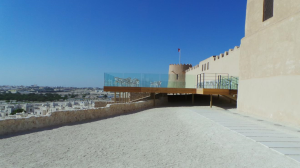
No comments yet.